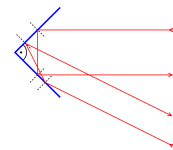Wandering Sagebrush
Free Range Human
I don't know how effective they are, but I wanted one and never bought because i felt the price was too much for what is there.
While poking around my favorite toy store (Fisherman's Marine) in Oregon City, I found a couple of Seadog reflectors for $11.50. The original price was around $30ish. Comparable in WM is $50ish. They are solid aluminum and will break down. There's one left in Oregon City, and maybe some at the Delta Park store.
Steve
While poking around my favorite toy store (Fisherman's Marine) in Oregon City, I found a couple of Seadog reflectors for $11.50. The original price was around $30ish. Comparable in WM is $50ish. They are solid aluminum and will break down. There's one left in Oregon City, and maybe some at the Delta Park store.
Steve

